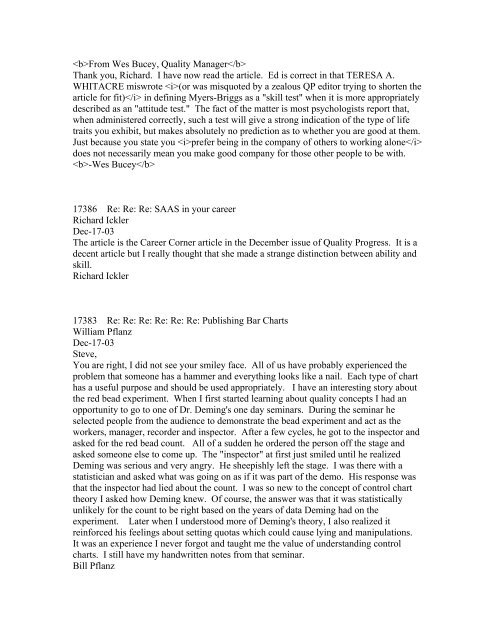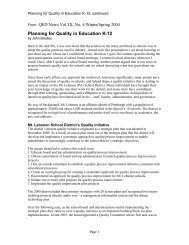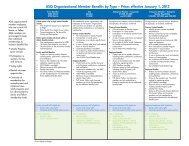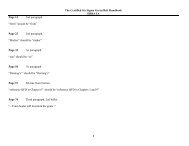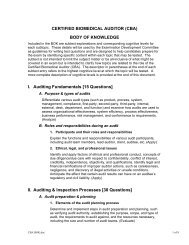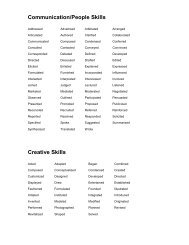Quality Progress - American Society for Quality
Quality Progress - American Society for Quality
Quality Progress - American Society for Quality
Create successful ePaper yourself
Turn your PDF publications into a flip-book with our unique Google optimized e-Paper software.
From Wes Bucey, <strong>Quality</strong> Manager<br />
Thank you, Richard. I have now read the article. Ed is correct in that TERESA A.<br />
WHITACRE miswrote (or was misquoted by a zealous QP editor trying to shorten the<br />
article <strong>for</strong> fit) in defining Myers-Briggs as a "skill test" when it is more appropriately<br />
described as an "attitude test." The fact of the matter is most psychologists report that,<br />
when administered correctly, such a test will give a strong indication of the type of life<br />
traits you exhibit, but makes absolutely no prediction as to whether you are good at them.<br />
Just because you state you prefer being in the company of others to working alone<br />
does not necessarily mean you make good company <strong>for</strong> those other people to be with.<br />
-Wes Bucey<br />
17386 Re: Re: Re: SAAS in your career<br />
Richard Ickler<br />
Dec-17-03<br />
The article is the Career Corner article in the December issue of <strong>Quality</strong> <strong>Progress</strong>. It is a<br />
decent article but I really thought that she made a strange distinction between ability and<br />
skill.<br />
Richard Ickler<br />
17383 Re: Re: Re: Re: Re: Re: Publishing Bar Charts<br />
William Pflanz<br />
Dec-17-03<br />
Steve,<br />
You are right, I did not see your smiley face. All of us have probably experienced the<br />
problem that someone has a hammer and everything looks like a nail. Each type of chart<br />
has a useful purpose and should be used appropriately. I have an interesting story about<br />
the red bead experiment. When I first started learning about quality concepts I had an<br />
opportunity to go to one of Dr. Deming's one day seminars. During the seminar he<br />
selected people from the audience to demonstrate the bead experiment and act as the<br />
workers, manager, recorder and inspector. After a few cycles, he got to the inspector and<br />
asked <strong>for</strong> the red bead count. All of a sudden he ordered the person off the stage and<br />
asked someone else to come up. The "inspector" at first just smiled until he realized<br />
Deming was serious and very angry. He sheepishly left the stage. I was there with a<br />
statistician and asked what was going on as if it was part of the demo. His response was<br />
that the inspector had lied about the count. I was so new to the concept of control chart<br />
theory I asked how Deming knew. Of course, the answer was that it was statistically<br />
unlikely <strong>for</strong> the count to be right based on the years of data Deming had on the<br />
experiment. Later when I understood more of Deming's theory, I also realized it<br />
rein<strong>for</strong>ced his feelings about setting quotas which could cause lying and manipulations.<br />
It was an experience I never <strong>for</strong>got and taught me the value of understanding control<br />
charts. I still have my handwritten notes from that seminar.<br />
Bill Pflanz


